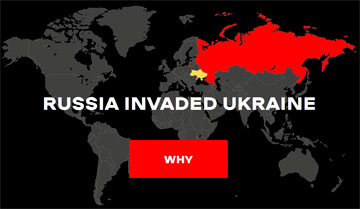Division by zero in Wireshark
| Risk | Low |
| Patch available | YES |
| Number of vulnerabilities | 1 |
| CVE-ID | CVE-2012-4285 |
| CWE-ID | CWE-369 |
| Exploitation vector | Local network |
| Public exploit | N/A |
| Vulnerable software |
Wireshark Server applications / IDS/IPS systems, Firewalls and proxy servers |
| Vendor | Wireshark.org |
Security Bulletin
This security bulletin contains one low risk vulnerability.
1) Division by zero
EUVDB-ID: #VU32761
Risk: Low
CVSSv4.0: 1.3 [CVSS:4.0/AV:A/AC:L/AT:N/PR:N/UI:N/VC:N/VI:N/VA:L/SC:N/SI:N/SA:N/E:U/U:Clear]
CVE-ID: CVE-2012-4285
CWE-ID:
CWE-369 - Divide By Zero
Exploit availability: No
DescriptionThe vulnerability allows a remote attacker to perform a denial of service (DoS) attack.
The vulnerability exists due to divide-by-zero error within The dissect_pft function in epan/dissectors/packet-dcp-etsi.c in the DCP ETSI dissector in Wireshark 1.4.x before 1.4.15, 1.6.x before 1.6.10, and 1.8.x before 1.8.2. A remote attacker can perform a denial of service (divide-by-zero error and application crash) via a zero-length message.
MitigationUpdate to version 1.4.15.
Vulnerable software versionsWireshark: 1.4.0 - 1.4.14
CPE2.3- cpe:2.3:a:wireshark_org:wireshark:1.4.0:*:*:*:*:*:*:*
- cpe:2.3:a:wireshark_org:wireshark:1.4.1:*:*:*:*:*:*:*
- cpe:2.3:a:wireshark_org:wireshark:1.4.2:*:*:*:*:*:*:*
- cpe:2.3:a:wireshark_org:wireshark:1.4.3:*:*:*:*:*:*:*
- cpe:2.3:a:wireshark_org:wireshark:1.4.4:*:*:*:*:*:*:*
- cpe:2.3:a:wireshark_org:wireshark:1.4.5:*:*:*:*:*:*:*
- cpe:2.3:a:wireshark_org:wireshark:1.4.6:*:*:*:*:*:*:*
- cpe:2.3:a:wireshark_org:wireshark:1.4.7:*:*:*:*:*:*:*
- cpe:2.3:a:wireshark_org:wireshark:1.4.8:*:*:*:*:*:*:*
- cpe:2.3:a:wireshark_org:wireshark:1.4.9:*:*:*:*:*:*:*
https://anonsvn.wireshark.org/viewvc/trunk/epan/dissectors/packet-dcp-etsi.c?r1=44247&r2=44246&pathrev=44247
https://anonsvn.wireshark.org/viewvc?view=revision&revision=44247
https://lists.opensuse.org/opensuse-updates/2012-08/msg00033.html
https://rhn.redhat.com/errata/RHSA-2013-0125.html
https://secunia.com/advisories/50276
https://secunia.com/advisories/51363
https://secunia.com/advisories/54425
https://www.gentoo.org/security/en/glsa/glsa-201308-05.xml
https://www.securityfocus.com/bid/55035
https://www.wireshark.org/security/wnpa-sec-2012-13.html
https://blogs.oracle.com/sunsecurity/entry/multiple_vulnerabilities_in_wireshark3
https://bugs.wireshark.org/bugzilla/show_bug.cgi?id=7566
https://hermes.opensuse.org/messages/15514562
https://oval.cisecurity.org/repository/search/definition/oval%3Aorg.mitre.oval%3Adef%3A15712
Q & A
Can this vulnerability be exploited remotely?
Yes. This vulnerability can be exploited by a remote non-authenticated attacker via the local network (LAN).
How the attacker can exploit this vulnerability?
The attacker would have to send a specially crafted request to the affected application in order to exploit this vulnerability.
Is there known malware, which exploits this vulnerability?
No. We are not aware of malware exploiting this vulnerability.
